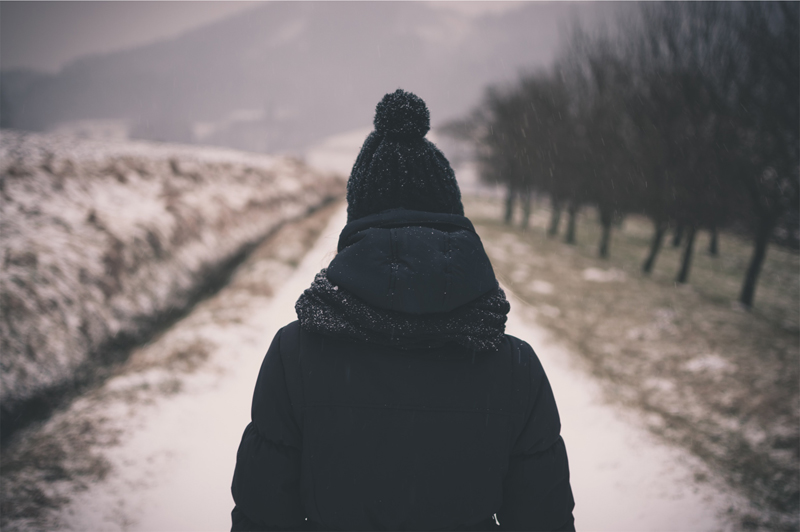I took a walk out into the snow, alone. I bundled up first, in layers, combing through drawers for insulated leggings and gloves and warm socks. By the time I was ready to go, I was almost unrecognizable in the mirror—no makeup, my hair hidden away under Jacob’s stocking cap and tucked into the neck of my fleece, my shape rounded out with two coats, zipped up tightly.
I just finished Pico Iyer’s beautiful little book on The Art of Stillness and wondered: when was the last time I was really alone with my thoughts and not engrossed in doing something (writing, reading, scrolling through webpages)? Somehow I knew I was being called out into the rare snowy morning.
Outside, it was still snowing lightly and I met the quiet, empty streets with a pause, deciding on my path. A neighbor was shoveling her driveway, so I decided to head in the opposite direction, avoiding a nod, or an acknowledgment, or the unspoken question of “why, what are you doing out here, all alone?”
It was good to feel the cold air in my lungs and I thought about those swimmers plunging into cold waters (from a podcast on finding the secrets of longevity)—how they seem to live longer, healthier lives. The theory has something to do with the benefits of exposing yourself to short-term, controlled physical stress. Your body responds, repairs, and gets stronger.
I walked south a block, then turned right on the next street. My footprints were the only ones and I looked back over my shoulder a few times, to see the pattern, in a line. It seemed like the whole world was still asleep, or inside keeping warm, with no intention of going outside. Cars were parked, unmoved, in driveways. The proof? There weren’t any tire imprints disturbing the snowfall on the streets.
I thought about how I need to see the way the familiar can be transformed; I have to commit it to memory, if only for comparisons later, in other seasons. It was easy to imagine sunny evenings, walking in the golden sunlight, under the heavy shade of the old oak tress that lined the street. I’d be saving this memory for that moment, in the future, when I’d think back to the same snow-packed versions of the same streets.
I only saw two more people—a man walking his dog, halfway down the next block, and another man standing in his garage, smoking a cigarette, letting his car idle. I trudged onward to the park, noting the particular stillness of snow-covered surroundings. It was so quiet.
I passed a tree with nearly thirty birds perched high on the branches. They huddled their heads down into their wings, keeping warm, and their round black outlines were like ornaments on the tree. I kept walking.
I climbed the hill overlooking the park’s field and the sidewalk that circles the perimeter. Standing in the grass, my feet sunk down into the snow, so that the toes of my rain boots were nearly covered. I stood there for a moment, taking it in. Although I could hear the traffic from the interstate in the distance, I had the feeling of finding the world, all alone, rare and untouched.
On the way back, I passed the same tree with the birds still in the branches. I stepped on something—a crack of ice or branch underfoot—and with that, they all flew away in one giant sweeping motion, to another tree on another block.
How do we come to love the places where we live? Why do they become so endeared to us? Our neighborhood—the perfect square of it, bookended on each side by a park, a school, a church, and a Jewish temple. It was my snowy morning expedition, finding adventure in each footprint in the snow, in each deep breath in and out, through the snowflakes.
What was the thing calling me outside? Perhaps it was the realization of how crucial it is for me to explore. It’s rooted somewhere in my childhood: combing the dark hallways of church after everyone else had gone home, or riding my bicycle down the street from my house to wander the woods. Now, as an adult, it manifests differently: traversing the landscapes within.

